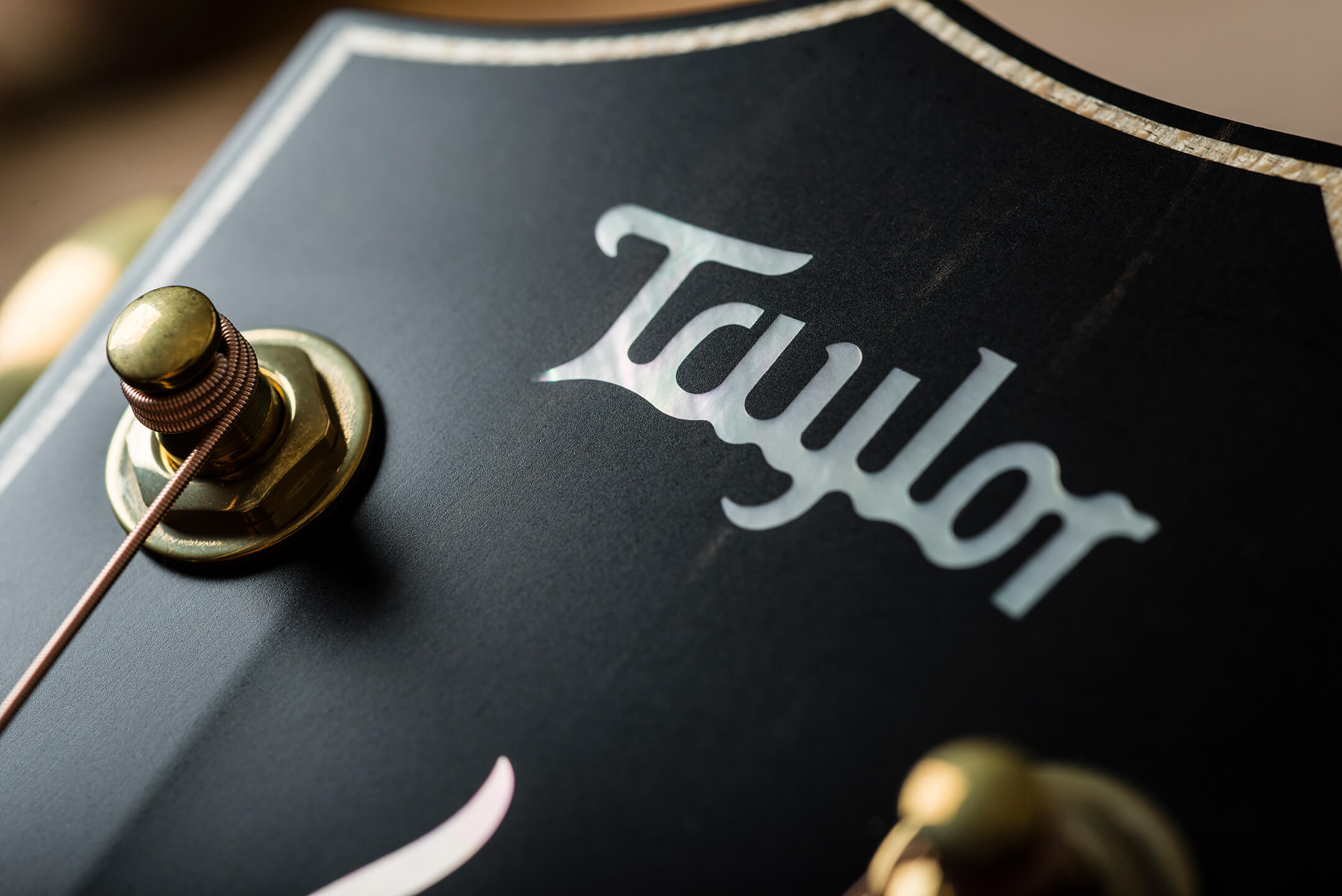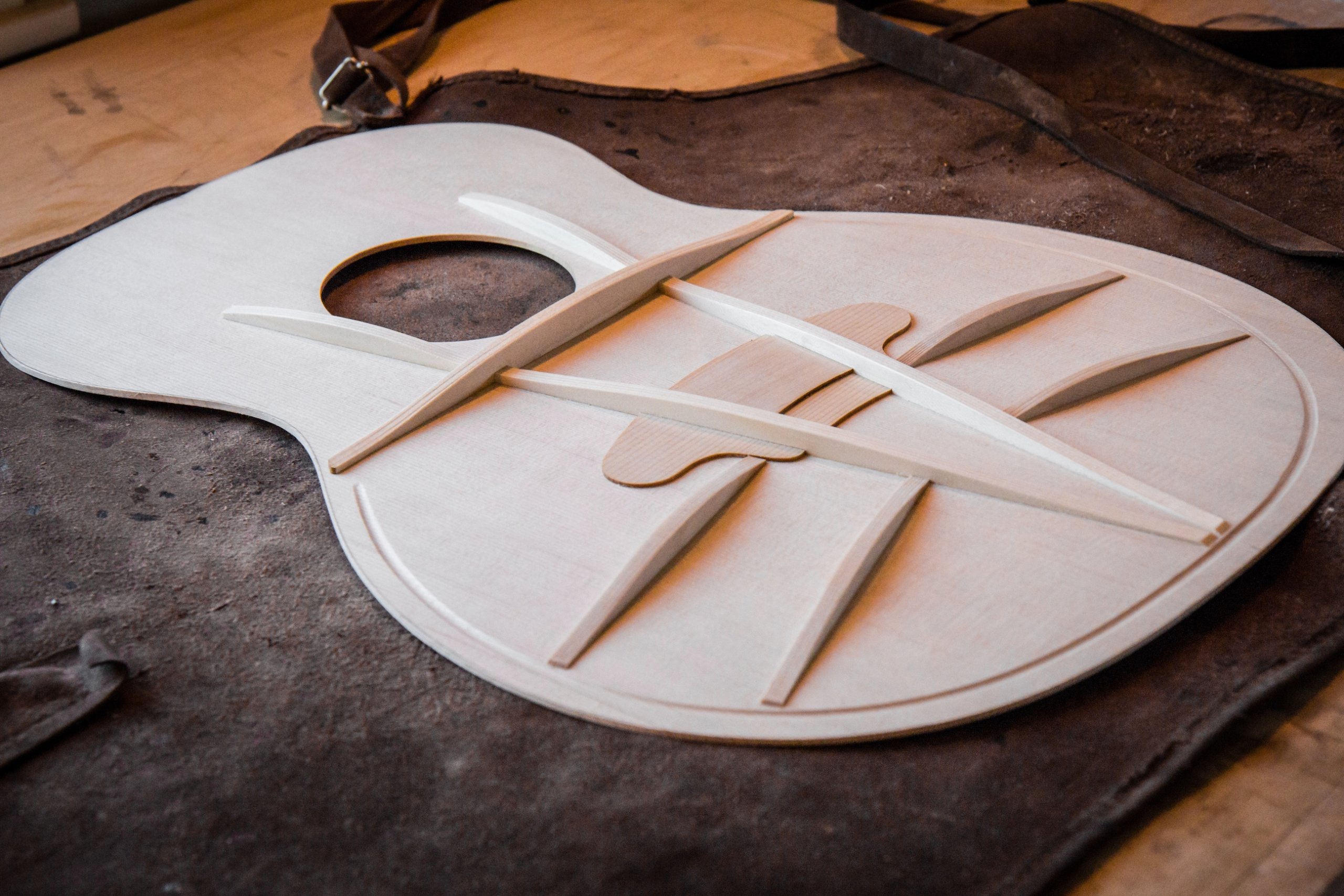A Brief History of Taylor Guitars
One of the biggest names in the acoustic guitar world, Taylor’s rise has been rapid and revolutionary – but it all started out in a Californian co-op…

Taylor and Listug decided early on that Bob’s name would grace the brand’s headstocks. Image: Eleanor Jane
To tell the story of Taylor Guitars, we have to go back to 1970 when a man named Sam Radding opened a guitar shop in Lemon Grove, California called American Dream Musical Instrument Manufacturing. The shop became somewhat of a co-op as Radding later explained to the San Diego Reader,
“It was a true bootstrap operation. We took people without a lot of experience and tried to turn them into guitar-builders. I always thought of it as a co-op because I didn’t set any hours. If people had equipment, they could bring it in. They could use their own hand-tools. If I remember correctly, it was a 60/40 split. They would get 60 per cent and the shop would get 40 per cent. We had this huge collection of really interesting people. A lot of people came into the shop and wanted a bench to work at. They had to convince me. I had to know they deserved it.”
- READ MORE: A Brief History of Guild Guitars
Among the builders who earned a bench there were Greg Deering [of Deering Banjo Company], Larry Breedlove [of Breedlove Guitars], and James Goodall [of Goodall Guitars], and Bob Taylor. Taylor came to the shop right out of high school in 1972 and began to hone his skills. There, he met another employee at the shop named Kurt Listug, who was a junior at SDSU studying philosophy and German, while building guitars in his spare time. It would be the start of something very special.
In 1974, Radding ran into some financial trouble, and told his employees that if they could come up with $2,400, they could have the shop. Taylor, Listug, and another employee named Steve Schemmer pooled their resources to come up with the required cash, and the co-op became a bona fide guitar business.

The trio renamed American Dream the Westland Music Company, but quickly found that shortening the name of the company would be better represented on headstocks. Ultimately the name was changed to Taylor – a couple reasons have been presented as to why Taylor’s name was chosen. First, they felt it sounded more American than Listug or Schemmer, but as Listug reflected in a 2011 interview, “Bob was the real guitar-maker.”
From the early days, Listug would handle the business end of things and Taylor handled design and production. Two years later, the pair decided that they were going to make the leap and sell their guitars through retailers – a massive step for a small brand.
In this period, Martin-style acoustics were the industry standard instrument, and those early Taylors were created to be essentially more affordable takes on the classic Martin designs. That being said, these first Taylor guitars did offer some benefits aside from just their price point – mainly focused on the necks. Taylor’s bolt-on necks were much easier to repair than glued-in ones, and the necks themselves had a lower profile and were available in varying widths, which made them nice for a wider array of guitarists.

Despite this, the company was struggling to make a profit. They were producing about 10 guitars per week by the late 70s, but their distribution deal wasn’t great, marginalising their profits, so they ended the deal in 1979.
The early 80s was a time in Taylor’s history that saw a lot of changes. In 1981, the company took out a loan to buy tools to streamline production, but a bigger issue was one out of the trio’s control entirely. With synth-driven music and heavy metal dominating the airwaves in the early 80s, there simply wasn’t the level of demand for acoustic guitars as there had been in previous decades.
Then in 1983 the trio became a duo – original investor Steve Schemmer sold his stake and left the company, leaving Listug and Taylor to focus their attention on marketing their guitars to distributors and keeping afloat in an industry that had little interest in acoustic instruments. The company was making enough money to keep itself going, but Taylor was very much a small-scale operation.

All that would change at the 1985 NAMM Show. At the show, Taylor debuted their Artist Series – a limited run of instruments that had tops stained various colours with interesting soundhole motifs. The guitars caught the eye of none other than Prince, who commissioned Taylor to build him a 12-string guitar – in purple of course.
The guitar was promptly created and delivered to Paisley Park, and soon the guitarist was using it on stage and in the studio. It was a huge breakthrough for the brand – but it came with a catch. As with his other custom instruments of the time, Prince didn’t want any of his live instruments to bear a visible brand name during that era, so they lost out on that massive marketing bonus.
Nevertheless, it did create a buzz and eventually people came to know who built the guitar. Artist commissions for Steve Stevens, Dan Crary and Leo Kottke soon followed, and these artist associations established Taylor as a high-quality brand – a reputation that remains to this day.

In the decades since, Taylor has proudly forged its own path, innovating in its own direction in terms of body shapes, design, and various other innovations. Perhaps the most enduring Taylor innovation is the NT neck joint – a patented new approach to bolt-on necks that allowed for unprecedented ability to adjust the neck and ease of repair, and continues to be used to this day.
Taylor Guitars has also been at the forefront of popularizing alternative and exotic tonewoods, and even teamed up with the legendary Rupert Neve to design their own pickup system and preamp, which in typical Taylor style does things a little differently to the rest of the industry.
Taylor the brand also grew exponentially in the decades after Prince’s first endorsement – becoming one of America’s biggest and most recognisable acoustic guitar manufacturers. By 2012 Taylor Guitars had more than 700 employees in two factories: one in El Cajon, California, and the just over the border in Tecate, Mexico, where the company makes their lower-priced models and guitar cases.
The company also experimented with various electric and acoustic-electric designs, including the thinline T5, which still has a devoted following to this day.

Conservation has also been at the forefront of Taylor’s mission in recent decades – in 2011, the brand took ownership of an ebony mill in Cameroon, so that they could ensure that their wood was sourced responsibility.
That same year, an acoustic luthier by the name of Andy Powers joined the company as the company’s new design chief, allowing Taylor to step back and focus on the company’s conservation work. In the years since, Powers has totally transformed the Taylor line, and become the driving force of innovation in the company over the following decade.

In 2018, Powers revealed V-Class, a revolutionary new method of bracing an acoustic guitar that totally changed the way an acoustic guitar top vibrated, allowing more stable tuning and improved projection. V-Class was soon rolled out across the Taylor line and is now the standard on most of the company’s US instruments.
Then in 2021, Taylor announced the biggest change to the company’s organisation in its history. In recognition of the transformative effect he’d had on the company over the previous decade, Powers was named president and CEO, with Taylor and Listug stepping back to more advisory roles on the board.

What’s more, Taylor also announced that it was transitioning to an employee-ownership model of governance, ensuring that the company’s 1,200 employees would benefit from the company’s success and growth.
Taylor has come a long way from a Californian co-op, but in many ways it has retained that sense of equity and innovation that started in American Dream Musical Instrument Manufacturing, while rising to become one of America’s most famous guitar brands.



